Ammonites
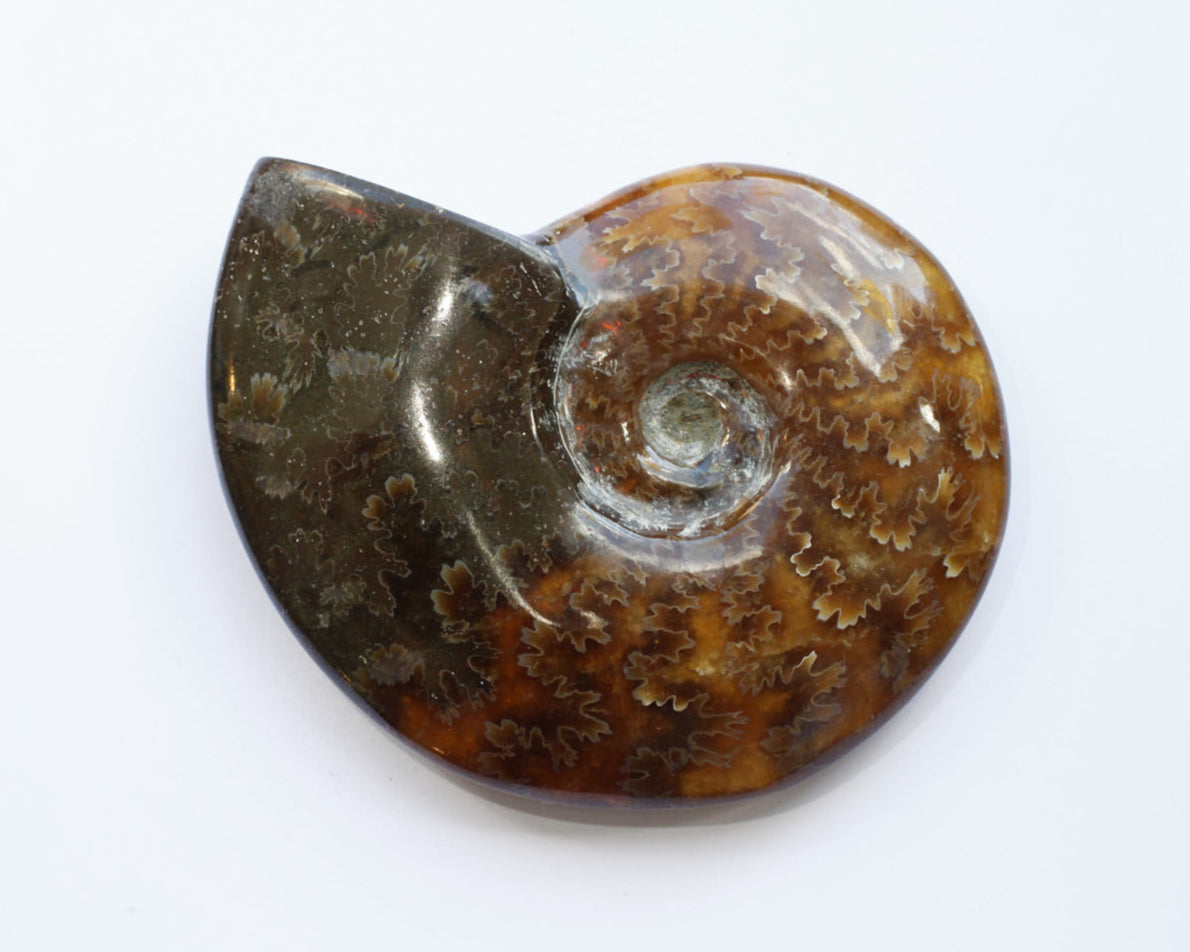
Ammonites are extinct marine mollusks that lived in the world’s oceans between 240 and 65 million years ago. They are relatives of modern squid and octopuses, but unlike their soft-bodied cousins, ammonites protected themselves inside tightly coiled shells.
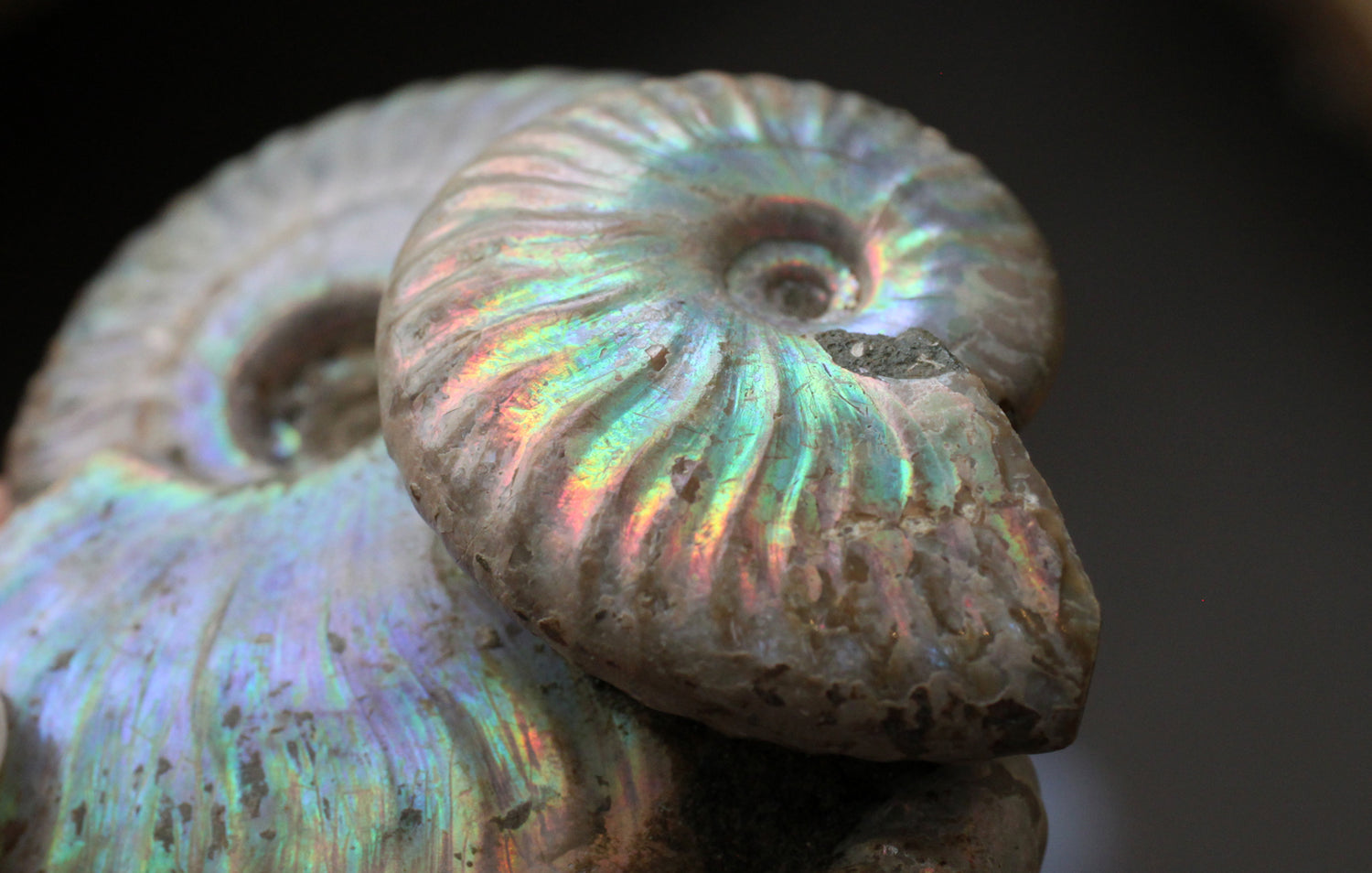
Nature’s Spiral
The shape of an ammonite’s shell isn’t random — it follows a logarithmic spiral, a growth pattern closely related to the golden ratio (φ) and sometimes compared to the mathematical constant π. This mathematical proportion is sometimes poetically called “nature’s code” because it appears in so many living forms.
The golden ratio allows the ammonite to grow larger without changing its overall shape — each new chamber in the shell is proportionally related to the previous one. This creates both strength and efficiency, vital for survival in ancient oceans.
This same spiral pattern repeats in many other natural creations: the arrangement of seeds in a sunflower, the swirl of a pine cone, the curve of a nautilus shell, hurricanes, the arms of spiral galaxies, and even the way some flowers bloom.
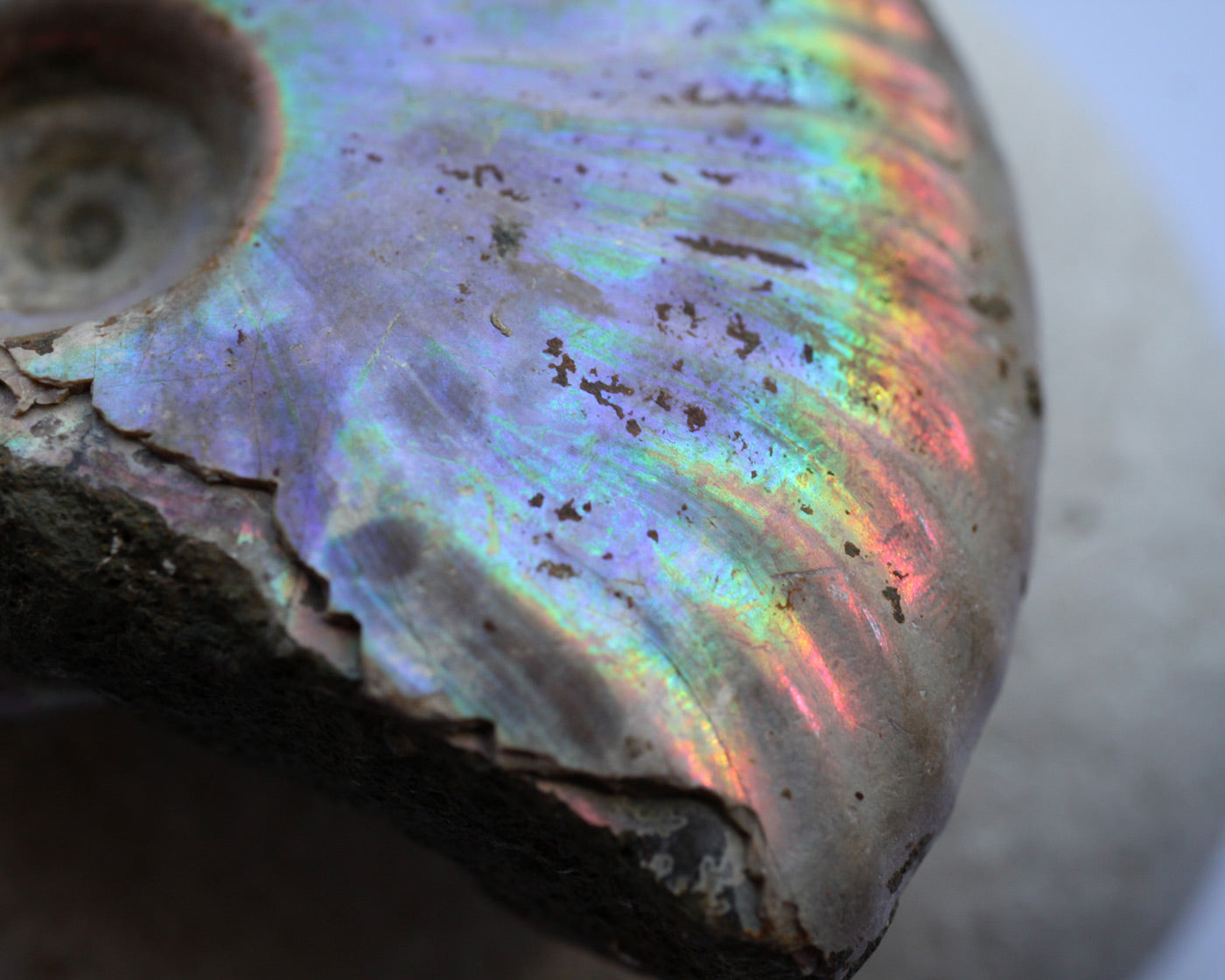
Pearl-like Beauty
Some ammonites have a surface layer of aragonite — the same mineral that forms pearls — which can survive fossilization. Over millions of years, this layer can develop vivid iridescent colors, known as ammolite when gem-quality. The shimmering reds, greens, and blues come from light interference in the microscopic layers of the fossilized shell.
Ammonites have been known to people for centuries. In Europe, they were described in the late 1700s, but they were collected and valued long before that. The Blackfoot people of Canada called them Iniskim (“buffalo stones”) and carried them as amulets for protection and good fortune, believing they could help attract buffalo herds. Fossils have also been found and treasured in other places like Madagascar, the UK, Africa and across Asia.
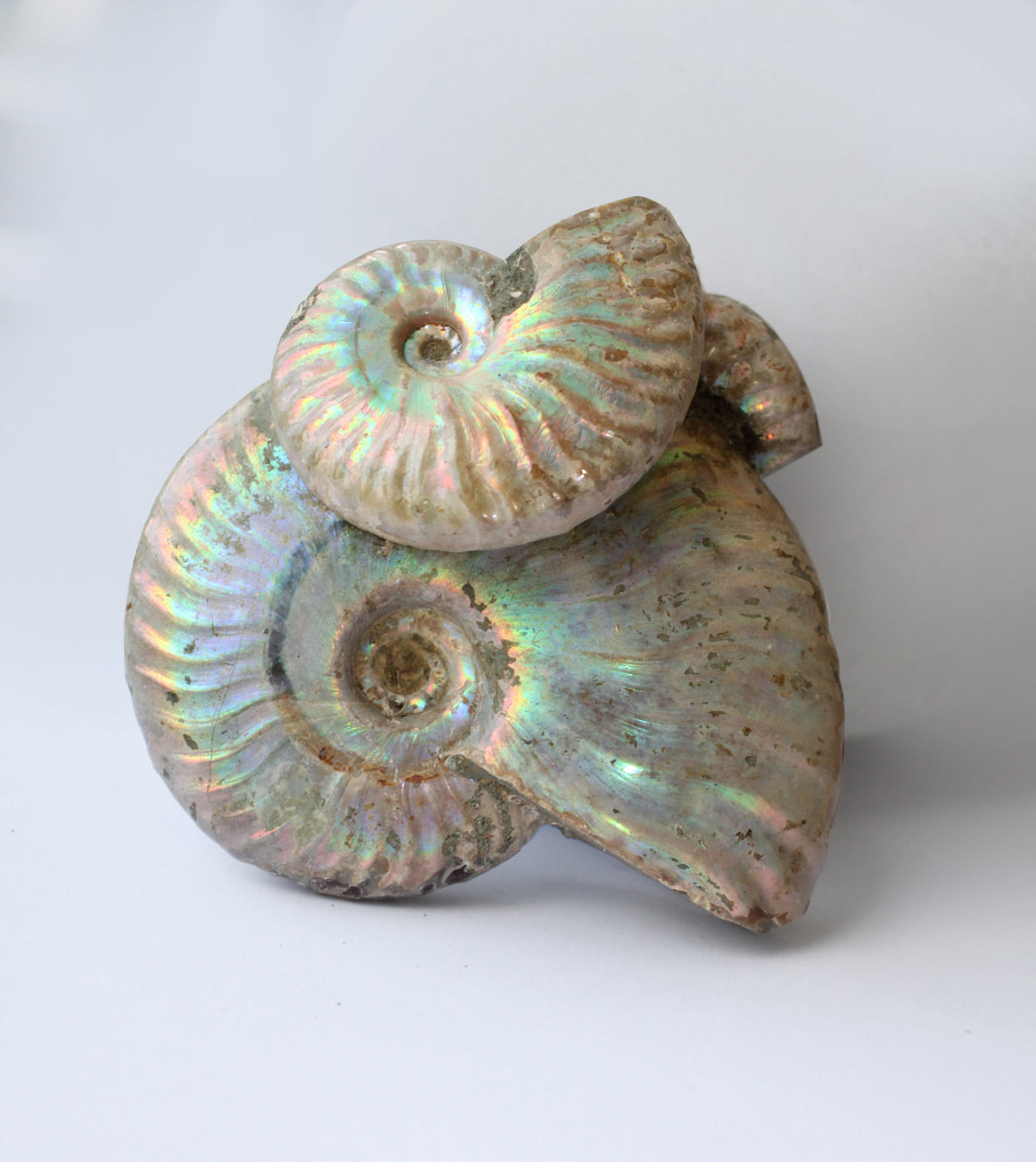
Ammonite Clusters
These groupings may have formed when shells were deposited together by currents, storms, or even mass die-offs. Over time, sediment buried them side by side, preserving a whole community of creatures that lived millions of years ago.
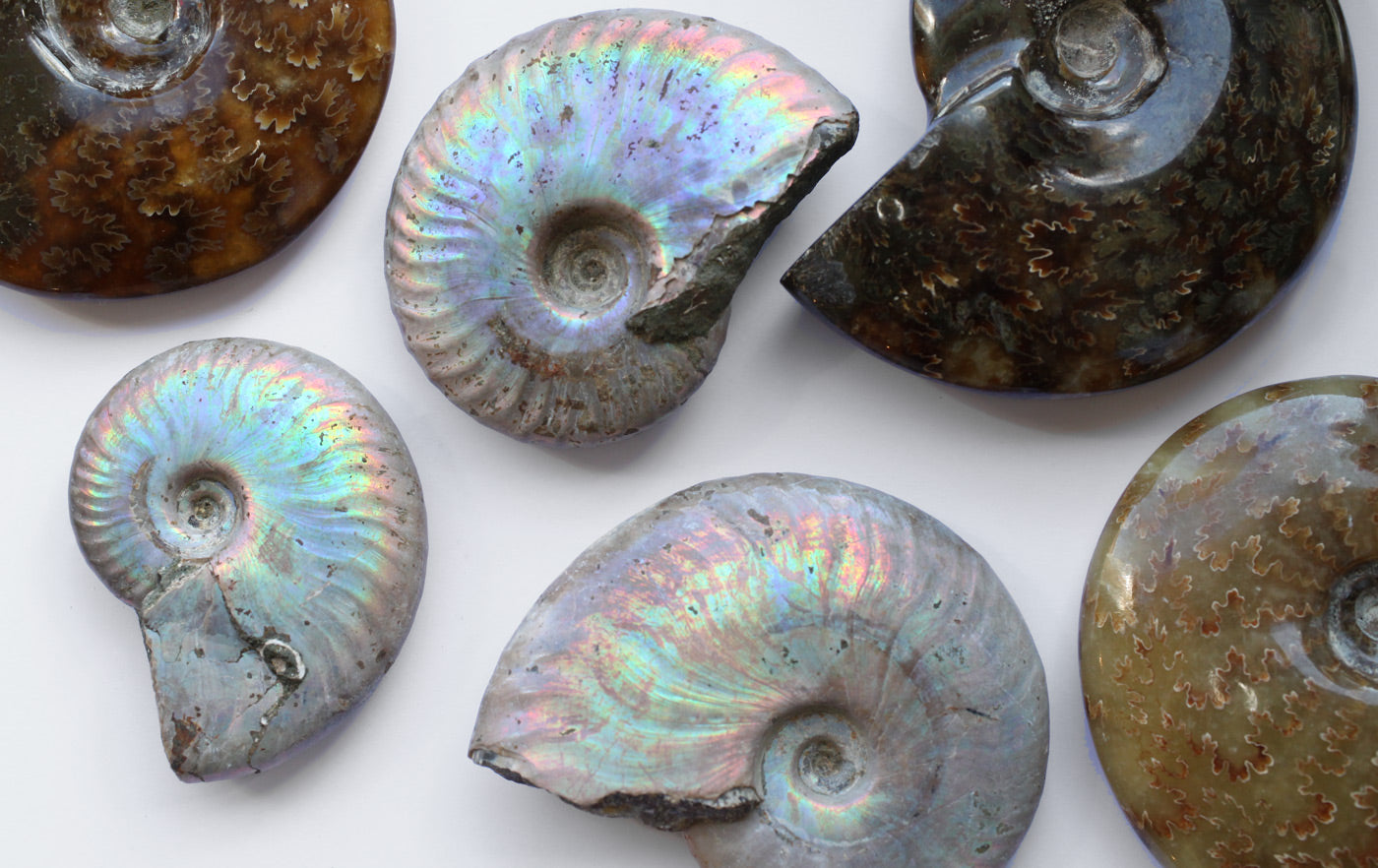
Specimens are available in our offline stores in Mariefred and Copenhagen
